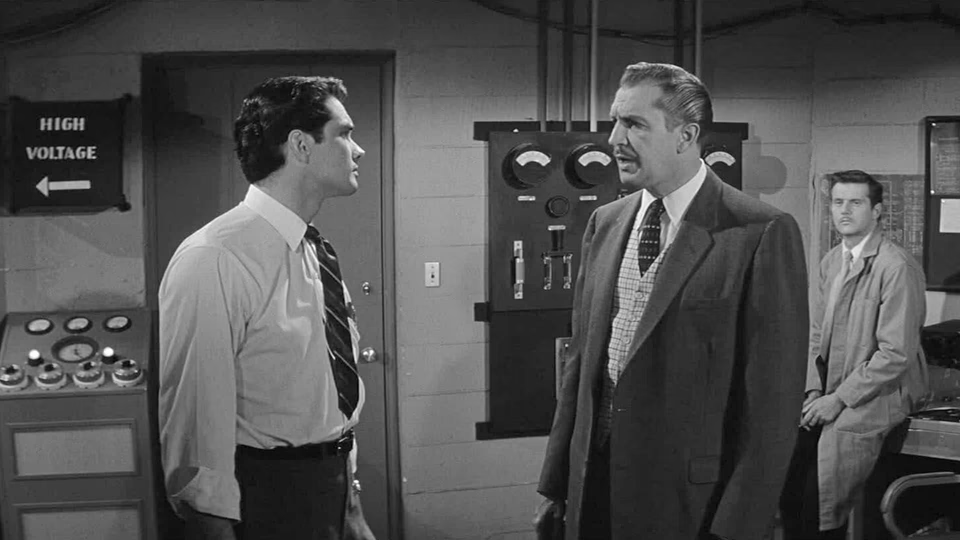Return of the Fly

There’s an unwritten rule in the horror genre that sequels must resurrect the monster, regardless of how definitively it was dispatched in the original film. The Return of the Fly demonstrates why this approach is so often misguided.
Coming just one year after its predecessor’s success, this hastily-produced follow-up abandons nearly everything that made the original effective. Where the first film used restraint and suggestion to horrifying effect, this sequel lurches around wearing its monster suit and demanding to be taken seriously.
The premise holds promise: Phillipe, son of the ill-fated scientist from the original, decides to continue his father’s teleportation experiments despite knowing the terrible consequences. The writers cleverly solve the “who would be stupid enough?” problem by making Phillipe the victim of industrial espionage, when a thief attempts to steal blueprints and shoves our protagonist into the machine along with an unfortunate insect.
Vincent Price’s return as the family patriarch proves welcome. Though he disappears for much of the film, his velvet baritone lends gravity to early exposition that might otherwise feel perfunctory.
When Price exits the narrative, Brett Halsey and David Frankham step in admirably as Philippe and his research partner Alan. Frankham, in particular, brings unexpected restraint to what could have been an over-the-top supporting role. Both actors commit fully to the film’s earnest vision of scientific endeavor, dutifully wearing sport coats to walk downstairs to their laboratory, only to hang them up and don lab coats, then reverse the process for the journey back upstairs.
Then the fly-headed monster appears, and whatever potential existed evaporates. Writer-director Edward Bernds commits the cardinal sin of horror filmmaking: he shows too much, too soon, under lighting too bright. The original film kept its monster hidden until the climax, and even then used it sparingly. Here, the full fly costume is paraded around in harsh light that reveals every seam and imperfection, transforming what should be a tragic figure into a Saturday matinee boogeyman.
From this point, the screenplay deteriorates into nonsense. Police officers fire their weapons at unidentified targets. The fly-monster appears in impossible locations without explanation. A gunshot inside a house is somehow heard by an officer down the street. By the time Price returns for the finale—only to be immediately incapacitated by a bullet wound—the film has abandoned logic entirely.
Budget constraints are painfully evident throughout. The original’s color photography gives way to cheaper black-and-white. While Bernds attempts to use shadows effectively in the third act, he can’t hide the cramped sets and flimsy props. When Price enters the laboratory, the door bumps against what’s supposed to be heavy machinery, causing it to wobble like the cardboard it clearly is.
Worst of all, the special effects border on comedic. Besides the obvious fly suit, the teleportations consist of cut-splices when objects disappear and a human-guinea pig hybrid sports laugh-out-loud costume gloves rather than actual animal appendages. These needn’t have been so bad. Cutting to reactions instead of the cut-splices for subsequent teleportations would have helped, as would some strategic shadows to obscure the ill-fitting gloves.
These missteps are symptomatic of a bigger problem. Where the original film used its fantastic premise to explore themes of scientific hubris and the fragility of human identity, this sequel is content merely to be a monster movie, and not a particularly good one. It trades the psychological horror of a man struggling to maintain his humanity for cheap scares and cheaper effects.
The Return of the Fly represents a fundamental misunderstanding of what made its predecessor effective. It’s a testament to the dangers of rushing a sequel into production without the resources or vision to do justice to the concept. In abandoning restraint for spectacle—spectacle it cannot afford to execute convincingly—it becomes exactly the kind of laughable monster movie its predecessor transcended.